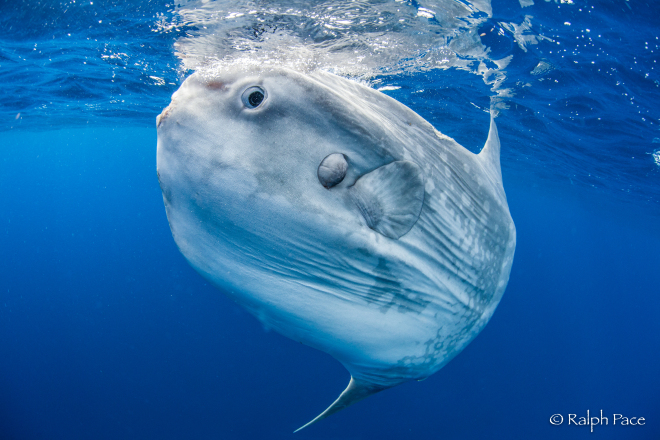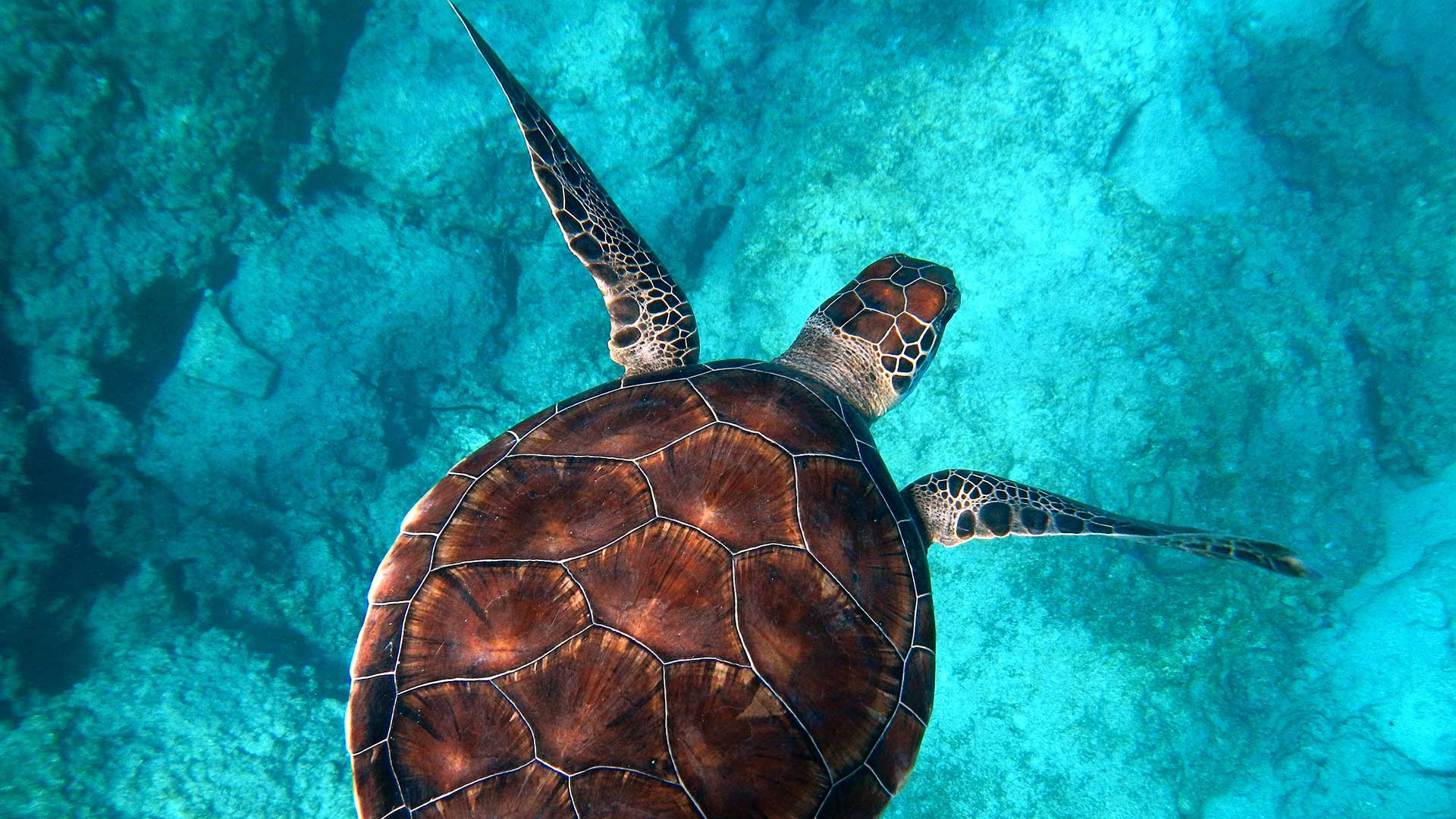Get to know your neighbors: Mola

A sunfish (Mola mola) swims near the surface off San Diego, California.
I am the ocean sunfish, also known as the Mola mola. Some people call me the alien of the sea because, well, I look like an alien! I’m a silver color, with very rough, thick, mucus-lined skin, and it looks like I’m only half a fish because where I should have a back fin, I have a clavus. When I was born, my back fin didn’t grow; instead, it folded into itself. This is a feature that defines all mola. I’m also told that I always look surprised because I have wide eyes and can’t close my mouth. Instead of having individual teeth, I have a beak-like structure, forcing me to always keep my mouth open. This also prevents me from chewing! I eat my food by sucking it in and out of my mouth until it turns into a mush that I can swallow. I prefer to eat jellyfish because they’re already pretty squishy and relatively easy to swallow. My digestive track is also lined with mucus to protect me against stings!
Although it seems that I’m missing the other half of my body, I’m definitely not a small fish. In fact, I’m the heaviest of all the bony fish! I live around 10 years and can grow as big as 14 feet and weigh about 5000 pounds. That’s as big as a pickup truck! Our kind is similar to sharks and rays in that females are bigger than males. Understandably so, female mola can produce up to 300 million eggs in one spawning season, more than any vertebrate on earth! While being this big has its benefits, it also has its disadvantages. The structure of my body and the fact that I don’t have a back fin make me a very slow and clumsy swimmer. I use my top and bottom fins to move through the water and my clavus to steer. Because I like to swim near the surface, my top fin sticks out, causing many people to believe that I’m a shark! I also don’t have the gas-filled swim bladder that most bony fish have, so I’ve had to learn to control my buoyancy on my own. But you know what they say, slow and steady wins the race!
In my case, however, slow and steady swimming has also been detrimental to my health. It’s very hard for me to escape from parasites and so my skin is always covered in them! However, I’ve resorted to some adaptations to try to get rid of them. When I’m feeling very desperate I dive around 10 feet out of the water and land flat in order to squash some of them off. Although this method isn’t very effective, it is a great sight to see! I know that I can’t battle these parasites on my own so I recruit the help of my friends. Halfmoon fish do a great job of taking off the easier intruders but seagulls take on the tougher ones. The seagulls are probably the reason that I’m called the ocean sunfish! I like to lay flat on my side at the surface to sunbathe and let the seagulls clean my skin. It’s like a car wash in the kelp forest!
Why should humans care about me?
I think humans are so interesting! Most of my friends swim away at the sight of humans in the ocean but not me! I enjoy going up to humans that are diving and snorkeling around me; my curiosity gets the best of me. I especially enjoy those that respect me, as I respect them. I’m a very friendly fish, but most divers still know better than to touch my parasite-infested skin.
However, as nice as people are in the water, their actions on shore still impact me. A big impact comes in the form of plastic. As I told you, my favorite meal is jellyfish! They’re easy to spot because they look like these giant clear blobs floating in the water. As you may know, pieces of plastic, especially plastic bags, look just like jellyfish in the water: giant, clear blobs. It’s very easy and dangerous for us to confuse plastic for jellies. When consumed, it can become lodged in our digestive track and prevent us from absorbing any nutrients. It’s also easy to become entangled in larger pieces of plastic. However, I’m not the only fish affected by plastic in the ocean. It affects organisms from fish larvae to seabirds.
One the many reasons why I enjoy living within a marine protected area (MPA) is that there is greater protection from pollution. The regulations set for each MPA restrict what activities humans can take part in at various locations on the coast and thus limit the threats that they pose to ecosystems and marine life. This protection allows ecosystems such as kelp forests to thrive. I’m particularly interested in kelp forests because of my skin condition. Halfmoon fish eat kelp and live in the forests. A healthy kelp forest can house an abundance of halfmoon fish that can assist me and my other mola friends. Seagulls are also attracted to thriving kelp forests because of the abundance of fish, or shall I say food, available. Thus my overall health depends on the livelihoods of other organisms and the health of kelp forests.
You can help me by supporting your local MPAs, getting informed about what activities you can partake in while at the beach, and practicing a conscious use of plastic. Thanks for listening!
Your friend,
The Ocean Sunfish
Mola mola
Check out this video of me making use of the ocean’s “car wash”!
By Mariaesther Diaz, WILDCOAST intern.


You must be logged in to post a comment.